 |
|
 |
 |
|
 |
 |
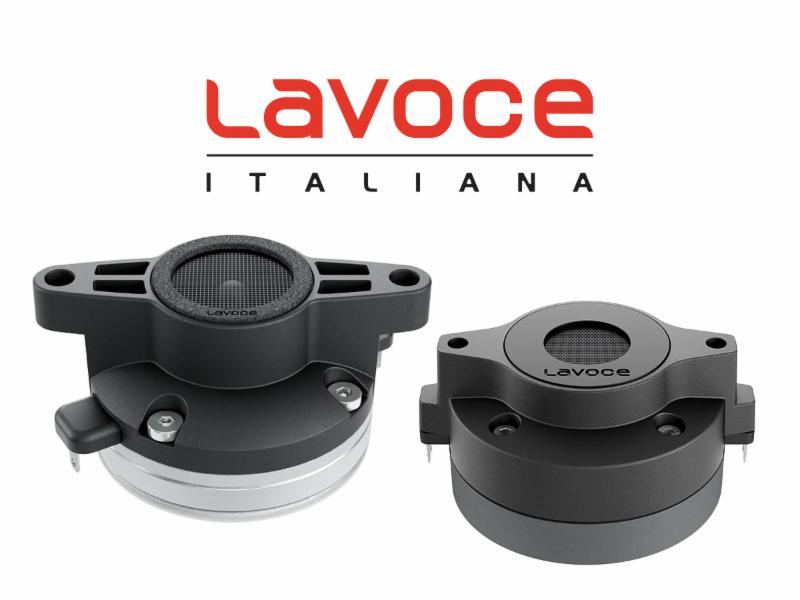
New Small Format Compression Drivers from Lavoce for Prolight+Sound 2018
Lavoce Italiana continues to consistently expand its OEM catalog of professional audio solutions, while expanding its distribution scope in tandem with its steady pace of product introductions. For Prolight+Sound 2018 (Frankfurt, April 10-13), Lavoce has several new products scheduled to be unveiled. The company has revealed details for their new small format compression drivers, the DN07.10LM, with a neodymium magnet, and the DF10.101LM, a ferrite magnet, both with 1" CCAW voice coils and FEM optimized.
Read More
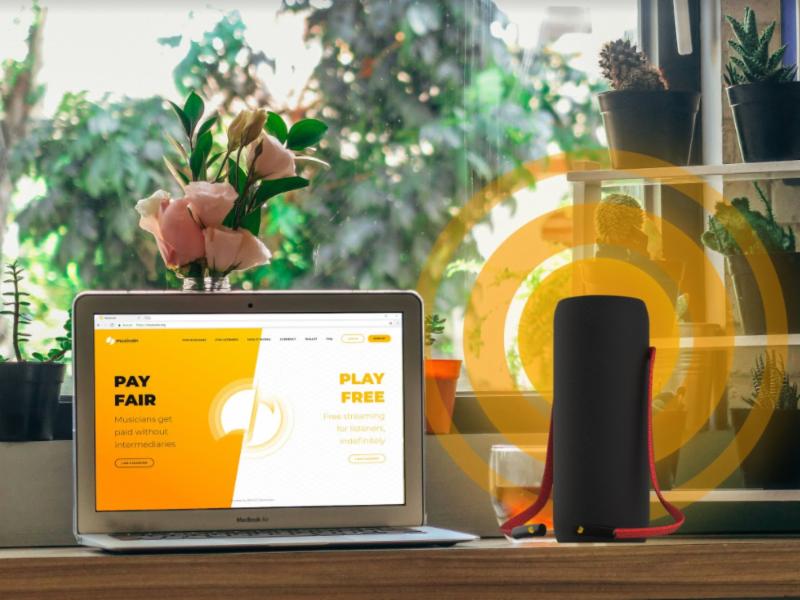 Volareo: A Streaming Speaker That Pays Musicians When Listeners Clap Volareo: A Streaming Speaker That Pays Musicians When Listeners Clap
The world's first blockchain music speaker is here. From the creators of Travis the Translator and the Travis Blue wireless speaker, comes a different sort of music smart speaker. Volareo is another Dutch innovation that made its world debut at SXSW 2018 in Austin, TX, and is directly connected with the new Musicoin, a new cryptocurrency and music streaming platform that intends to reward musicians in a different way.
Read More
Dayton Audio Announces MK442 Center Channel Home Theater Speaker
Dayton Audio announced its new MK442 center channel speaker, designed to complement the Dayton Audio MK402 bookshelf speakers in a multi-channel home theater system. The new 80 W RMS speaker features two 4" treated paper woofers optimized for low-frequency extension, with a centered 3/4" silk dome tweeter, offering a balanced combination for wide dispersion and impressive room-filling sound. The speaker features an attractive textured, black vinyl finish with five-way binding posts.
Read More
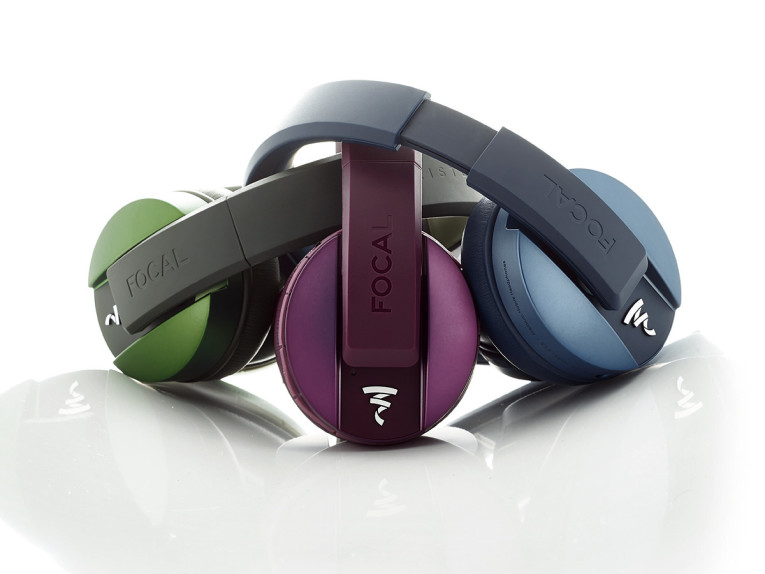 Focal Expands Wireless Headphone Range with New Listen Wireless Chic Models Focal Expands Wireless Headphone Range with New Listen Wireless Chic Models
Focal has heavily invested in the research and development of its headphone products, leading to the release of high-end models such as the Utopia, Clear, and Elear, followed by the introduction of the new Listen and Clear Professional models earlier this year. The French company entered the wireless segment in 2017 with its Listen Wireless Line, a closed-back Bluetooth 4.1 model with aptX. Now Focal has announced three Blue, Olive, and Purple designs with the lifestyle-oriented Listen Wireless Chic range.
Read More
Cambridge Audio Reimagines the Living Room with New Edge Hi-Fi Components
British manufacturer Cambridge Audio is celebrating 50 years of audio innovation with the introduction of its Edge series. A new range of high-end hi-fi components that the company says represents the culmination of its audio engineering expertise. The Edge series includes an integrated amplifier, a preamplifier/network player, and a power amplifier, all setting a new standard for design and performance in the brand's tradition.
Read More
Audio Precision Adds Speech Intelligibility Measurement Option for APx500 Audio Test Software
Audio Precision announced the addition of a new speech intelligibility measurement option for APx500 audio test software based upon the ABC-MRT speech processing algorithm. The new ABC-MRT option provides an objective measure of speech intelligibility following the paradigm of the Modified Rhyme Test, offering an important capability for designing and validating a wide range of communication systems, products, and components, especially those related to public safety.
Read More
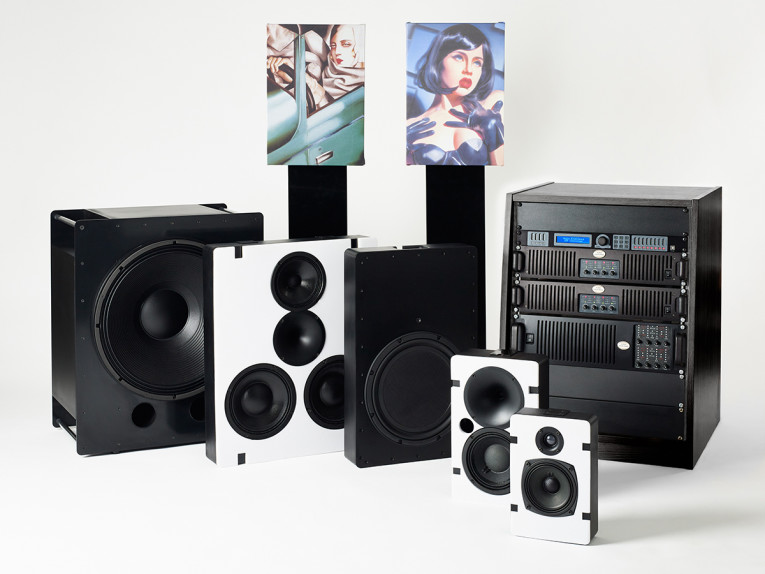
Audio Excellence Expands Home Theater Systems in US
Already selling in many markets around the world since its 2016 launch, UK company Audio Excellence made its North American debut at the 2017 CEDIA Expo. The patented approach used by Audio Excellence has already begun to take root among high-end home theater designers in the US. The brand is now developing a national sales network, and announced the appointment of its first independent sales reps in the US, with opportunities for representation in other territories.
Read More
Smart Speakers Drive Music Consumption, Key Takeaways from Insightful BPI and ERA Event
It could be argued that the proliferation of smart speakers in the last two years has heralded the biggest evolution of music consumption we have seen since the launch of the iPod, iPhone, and the CD. The BPI and ERA held an event in London on March 20, 2018, that tackled the smart speaker impact on music consumption. Futuresource was proud to be on the bill, alongside several esteemed industry leaders and experts. David Sidebottom reports.
Read More
|
|
 |
 |
|
 |
|
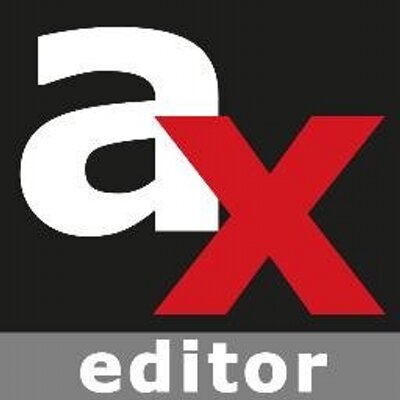
Editor's Desk
Audio Opportunities in Growing Market Segments
This week I thought I should share some of the latest market indicators with contributions from multiple market research firms. These indicate that there are great market opportunities ahead - not necessarily in the traditional product segments.
Yes, it would be great to see indicators of growth in every segment, but there's no sign of that in some specific product categories such as traditional hi-fi components, budget multichannel home cinema systems, and some very specific products in MI, home studio, and pro audio, which are clearly saturated with low-price options and where demand is stagnant if not decreasing. However, there continues to be strong demand in soundbars and portable Bluetooth speakers, headphones in almost all categories, with the high-end luxury market showing signs of growth due to expanding global demand and economy strength in US, Europe, and the wealthiest economies around the world.
|
|
|
More than audio gadgets, innovation in audio technologies are effectively powering many cutting-edge applications in consumer electronics, corporate, and professional AV applications. Read more about Product Development in audioXpress
.
|
According to Futuresource Consulting - which is about to publish an updated Worldwide Headphones Market Report - the headphones market has experienced growth in units and revenues for more than 10 years and this trend continues in 2017. The worldwide headphones aftermarket grew 3.9% to 362 million units in 2017, while retail value grew a remarkable 30%, to generate revenue worth $16.9 billion. The new updated report supplies market estimates from 2015 and forecasts until 2022.
Meanwhile, we can look at other market segments where audio technologies continue to power-up the industry. As reported by ABI Research, the mobile handset accessory market continues to show steady growth, and strong contribution margins, a category that also includes mobile speakers (apart from chargers, batteries, memory cards, etc.). As noted from our Mobile World Congress 2018 coverage, mobile phone manufacturers are increasingly complementing their new models with modular speaker covers and many are adding value to their latest offerings with connected speakers that help users listen to music or take phone calls at work or at home. Headsets are another category that continues to be strategic for smartphone brands, increasingly packaging their models with better quality options, including now wireless and ANC-able models.
|
|
|
The overall market for headphones continues to grow in 2018, mainly due to sales of wireless headphones, as detailed by Futuresource Consulting, which will soon publish an updated Worldwide Headphones Market Report, confirming the segment growth.
|
According to ABI Research, the mobile handset accessories segment forecasts global revenues of aftermarket mobile accessories to near US$89 billion in 2022. In fact, aftermarket Bluetooth headsets for smartphones will grow at the fastest rate in terms of both revenue and shipments, with the latter expected to show a 7% compound annual growth rate (CAGR) between 2017 and 2022, rising to nearly 563 million in 2022.
"Aftermarket Bluetooth stereo headset shipments and revenues are experiencing steady growth due to the increasing number of companies offering the devices (such as Apple with its AirPods) to give consumers a wireless experience," says Stephanie Lawrence, Research Analyst. "Some of this increase has been driven by Apple replacing the 3.5 mm jack in its iPhones with the Lightning connector, and this will be bolstered further as other vendors move toward excluding the jack in high-end devices in favor of using USB Type C for audio. Since headsets are not yet provided in-box with these types of connectors, users will have to rely on adaptors or Bluetooth headsets."
And then there's the new star among the brand-new product segments and probably the greatest opportunity - long term - for the audio industry: Smart home. According to GfK, Smart Home seems to have made the strongest impact among the many emerging digital technologies vying for consumer attention. According to the latest GfK smart home report, nearly six out of 10 (58%) of US consumers say Smart Home - defined as a "smart house in which most things are interconnected"- is likely to change their lives in the next few years. The study measures 11 up-and-coming digital technologies, which consumers say are more likely to impact them, including also wearables, cloud computing, and connected cars (which we could call more outside-the-home tech...), and details the technologies that are "rooted in hands-on experience and dollars spent." GfK found that over one-quarter (27%) of US consumers have more than three Smart Home devices, and another 7% own two or three. Overall, half of all people GfK surveyed have at least one Smart Home technology, the majority citing home entertainment (smart speakers) and home security systems.
Let's now look at more indicators in the less discussed product categories where audio technologies are having a strong impact. In the wearables category, Juniper Research recently published its report on "Smart Wearables: Competitor Strategies, Opportunities & Forecasts 2018-2022," including the fitness, healthcare, smart watches, smart glasses, wearable cameras, smart jewelry, and connected clothing sectors (most feature microphones, speakers, voice-recognition, wireless streaming, digital audio processing, etc.). The study includes analysis of key market developments and device use cases (e.g., true wireless earbuds).
|
|
|
Nearly 350 million wearable devices will ship in 2020, up from 224 million in 2018, according to Juniper Research's "Smart Wearables in 2020" report.
|
Juniper Research says the wearables market has begun to shift away from wrist-based devices such as smart watches and fitness trackers, with other device categories forecast to grow much faster over the next two years. Which categories? The market research firm identified "Connected Clothing" as the one with the largest growth potential (102% CAGR), followed by Smart Glasses (98% - I sincerely hope not, and don't agree), Smart Jewelry (55% - this one is somewhat intriguing), followed finally by the established segments of Hearables (31%), and Smart watches (31%).
According to Juniper, the total smart wearables market will reach nearly 350 million devices shipped by 2020. "The market is currently dominated by smart watches and activity trackers, with 137 million devices expected to be shipped in 2018. However, growth will slow, shipping almost 190 million by 2020 as the lifecycle of devices lengthens as fewer new features and a software focus delay repeat purchases." Juniper expects connected clothing to accelerate in the coming years, thanks to developments in conductive fabric, alongside smart sportswear from companies such as Sensoria, Lumo and Under Armour. This sector will ship more than 7 million by 2020, before reaching nearly 30 million in 2022.
I still have doubts about how to best combine electronics and transducers with clothing. I have to confess that nothing I've seen so far has convinced me, including those scarves and headpieces with built-in earbuds or headphones... My experience with forgetting things in the pocket tells me that connected clothing is not laundry friendly... but hey, maybe there's an opportunity to invest in dry cleaning!
And discussing other less visible market opportunities for audio technologies, I believe that great potential lies ahead in professional audio applications in offices (corporate) and buildings, while the touring and live concert segment appears to be ripe for a strong shake-up, with manufacturers starting to pitch new approaches with multi-channel systems, getting away from the traditional mono, left/right, and even LCR approach used in PA systems. Clearly, I think that spatial/immersive audio and other approaches will reenergize this market segment, as already promised by L-Acoustics and d&b audiotechnik, among others. But those are topics to expand on at another time.
For now, I will mention a new indicator from Synergy Research Group discussing the collaboration market. According to Synergy, total Q4 2017 revenues from collaborations - which includes enterprise voice, Unified Communication (UC - yes, it used to be called audio conference...), telepresence, email software, enterprise content management, enterprise social networks, and a range of hosted/cloud communications and applications - reached an all-time high at just shy of $10 billion.
|
|
|
These are the worldwide Collaboration Market leaders, according to Synergy Research Group.
|
According also to Synergy, Cisco maintains a narrow lead over main challenger Microsoft in the enterprise collaboration market. Cisco's worldwide market share was relatively stable over the four quarters of 2017, while Microsoft's share nudged up as the year progressed. The two are followed at a distance by IBM, Avaya, Mitel, Google, and many others. Those companies are the leaders because they control the cloud applications and collaboration software, while more audio-centric companies only get a small piece of the puzzle.
In my opinion, there's significant market potential because audio communication is still the key for collaboration and business, while the use of voice as the new user interface and all the convergence of key components and technologies, from DSP, and beamforming to new MEMS microphones and microspeakers allows things that we could never have imagined. Yes, the networking aspect is also crucial, but that's where the established players will dictate the rules because of video.
Teamwork applications is an emerging and super-high growth area in this segment, where Cisco and vendors such as Slack are betting strongly. Other substantial vendors whose Q4 revenues grew by 20% or more year-on-year include Zoom, Fuze, RingCentral, Five9, Vonage, BlueJeans, Polycom, and 8x8. Follow those names. We've seen the trend clearly at ISE 2018, with many new players entering the market, all of which had key audio innovations to distinguish themselves. And that includes Dolby with its spectacular Dolby Voice solution.
"Collaboration continues to be a somewhat fragmented market that is characterized by a long list of disruptive and high-growth companies and we are now having to track 160 different vendors and service providers in order to really understand the market," says Jeremy Duke, Synergy Research Group's founder and Chief Analyst.
Finally, I have to mention an interesting report that details the Technology Industry's Impact Felt in US Economic Growth. According to the Computing Technology Industry Association (CompTIA), tech employment in the US expanded by nearly 200,000 jobs in 2017, to an estimated 11.5 million workers; and at $1.6 trillion, the tech sector is one of the largest components of the nation's economy, according to Cyberstates 2018, the annual analysis of the nation's industry published by the technology industry association.
The economic might of the tech industry is felt in nearly every state. The industry is a top-five economic contributor in 22 states; and in the top 10 of 42 states. "Tech's direct contribution to local, state, and national economies is only a part of the story," says Todd Thibodeaux, CompTIA president and CEO. "Technology is the generator that powers innovation, growth and breakthroughs in virtually every other sector of the economy; from advanced manufacturing techniques and innovations in transportation, to smarter, more livable communities, to advances in education, energy, and healthcare."
The outlook for technology employment points to a continuation of the growth trend, which has seen tech jobs increase by about 200,000 each year since 2010. Projections from the U.S. Bureau of Labor Statistics indicate the base of tech occupations will increase by 626,000 jobs by 2026. When factoring in the need to replace retiring or career-change workers, the total potential tech workforce reaches 1.2 million through 2026.
"Employer demand for tech talent continues to outstrip supply in many markets," said Tim Herbert, senior vice president of research and market intelligence for CompTIA. "Nationally, the number of job postings associated with emerging technologies increased 27% year-over-year - further confirmation employers are ramping up hiring in areas such as the Internet of Things, artificial intelligence, machine learning, autonomous vehicles, augmented and virtual reality, and more."
It's an interesting report to read.
|
|
 |
|